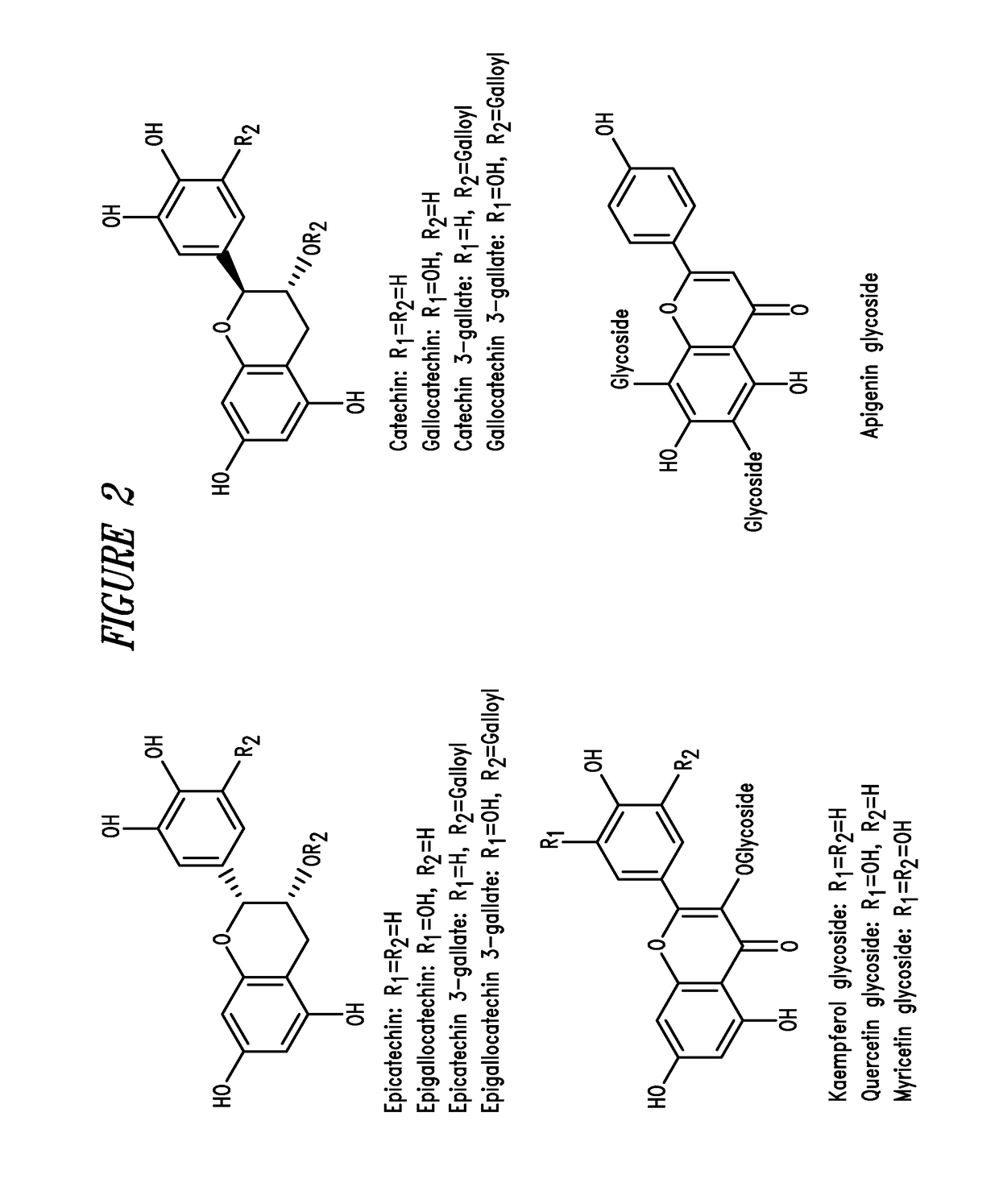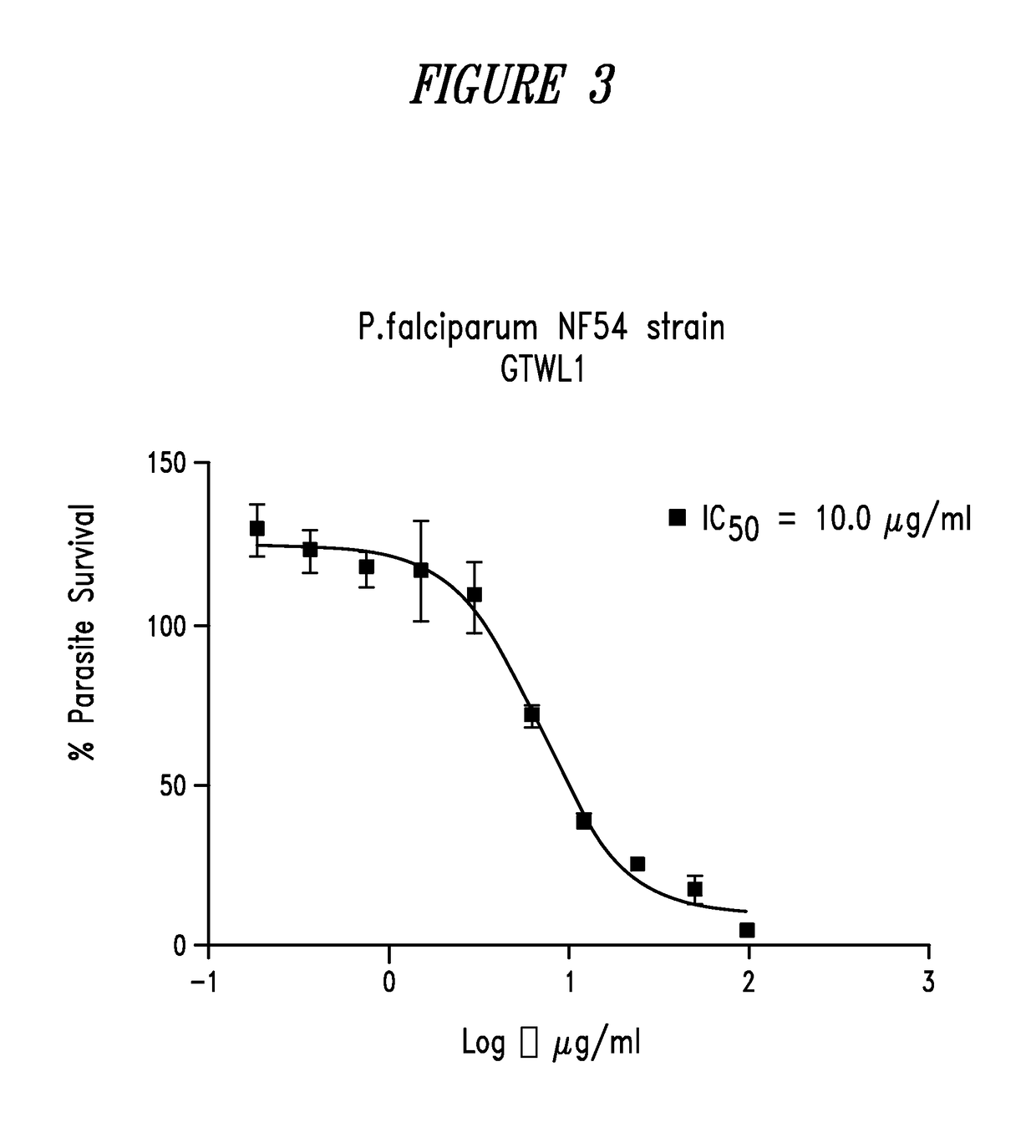Green tea compositions
a technology of compositions and green tea, applied in the field of green tea compositions, can solve the problems of large exposure differences among clinical trial participants, inability to widely use these or other medicinal uses, and inability to achieve the effect of improving bioavailability
- Summary
- Abstract
- Description
- Claims
- Application Information
AI Technical Summary
Benefits of technology
Problems solved by technology
Method used
Image
Examples
example 1
[0149]A non-limiting method of processing the green tea plant material makes use of a High Shear Processor as described in U.S. Pat. No. 6,783,271, the contents of which are incorporated herein by reference. Optimal use of this process is based on the condition of the raw material, for example the green tea leaves. Based on extensive preliminary work, certain guidelines described herein can protect the integrity of the tea catechins prior to processing.
[0150]Excess heat and physical conditions can damage newly-picked leaves in the field, so the leaves should be collected and packed with care to ensure that the leaves are not bruised or exposed to temperatures above 28° C. As soon as possible, the leaves are transferred to a temperature controlled environment with temperature below 28° C. and preferably below 25° C. Following transportation as required, the leaves are processed by the method of this example as soon as practical, to ensure that the raw plant ...
example 2
[0154]This example describes the polyphenol profile of an exemplary catechin composition prepared according to Example 1. The total polyphenols are measured using methods described in Methods of Enzymology 299:152-178 (1999), and the catechins are measured as described in Sakakibara, H. et al., J. Agric. Food Chem. 51:571-581 (2003). The catechins analyzed are as follows: epi-gallocatechin (EGC), catechin (C), epicatechin (EC), epigallocatechin-3-gallate (EGCG), gallocatechin gallate (GCG), epicatechin-3-gallate (ECG), catechin gallate (CG), and gallocatechin (GC). The results are shown in Table 1.
TABLE 1Catechin composition analysisCatechinAmount, mg / gEpi-gallocatechin (EGC)292.0Catechin (C)20.3Epicatechin (EC)56.8Epigallocatechin-3-gallate (EGCG)294.0Gallocatechin gallate (CCC)67.1Epicatechin-3-gallate (ECG)86.9Catechin gallate (CG)12.1Gallocatechin (GC)33.9(Caffeine)118.0Total Catechins863.0Total Polyphenols (Gallic Acid650.0Equivalents)
[0155]The perc...
example 3
Catechin Chromatographic Analysis by HPLC
[0156]An exemplary method is provided in Rinaldo, D., et al., Chirality 22:726-33 (2010), which describes the direct separation of catechin, ent-catechin, epicatechin, and ent-epicatechin in normal phase by HPLC-PAD-CD using Chiralcel OD-H as chiral stationary phase and n-hexane / ethanol with 0.1% of TFA as mobile phase.
PUM
| Property | Measurement | Unit |
|---|---|---|
| Fraction | aaaaa | aaaaa |
| Size | aaaaa | aaaaa |
| Size | aaaaa | aaaaa |
Abstract
Description
Claims
Application Information
 Login to View More
Login to View More - R&D
- Intellectual Property
- Life Sciences
- Materials
- Tech Scout
- Unparalleled Data Quality
- Higher Quality Content
- 60% Fewer Hallucinations
Browse by: Latest US Patents, China's latest patents, Technical Efficacy Thesaurus, Application Domain, Technology Topic, Popular Technical Reports.
© 2025 PatSnap. All rights reserved.Legal|Privacy policy|Modern Slavery Act Transparency Statement|Sitemap|About US| Contact US: help@patsnap.com



